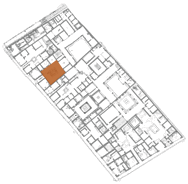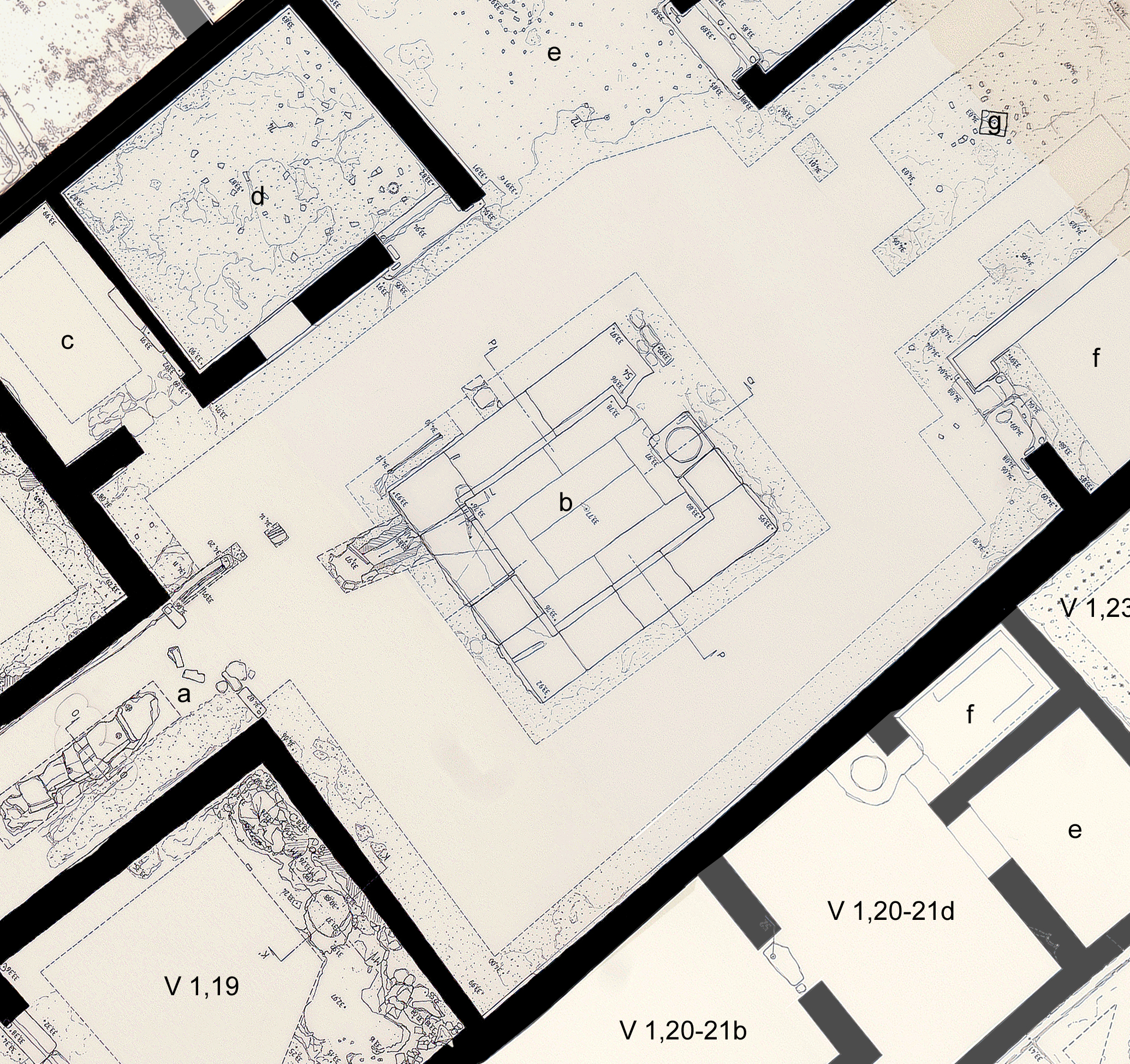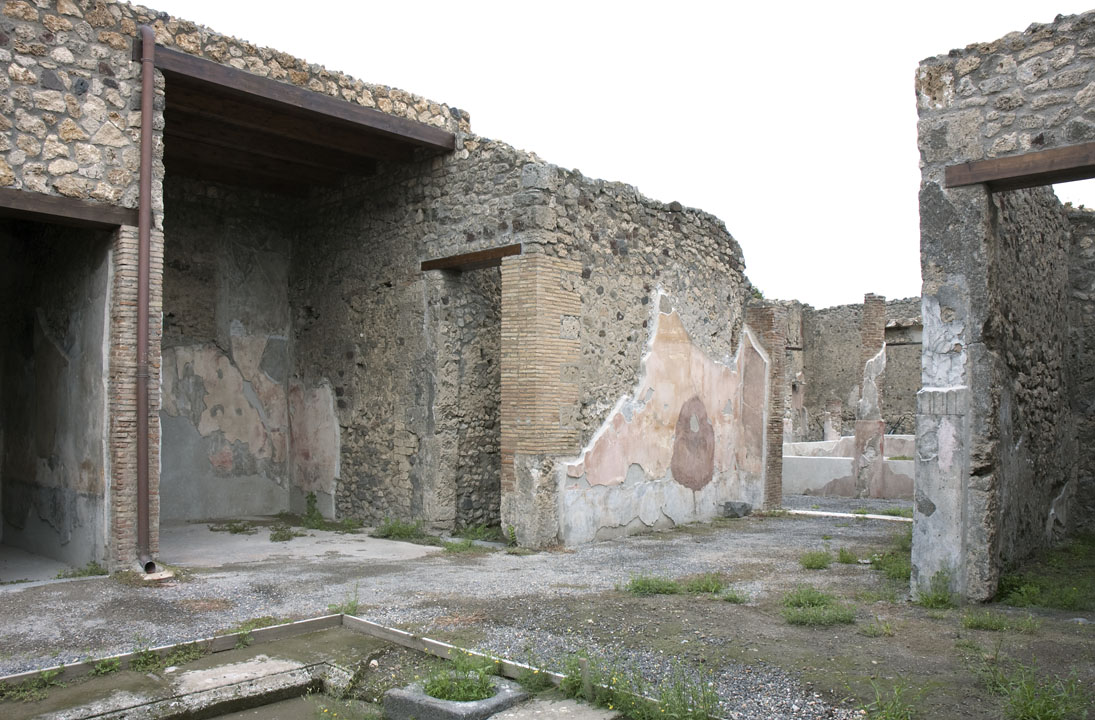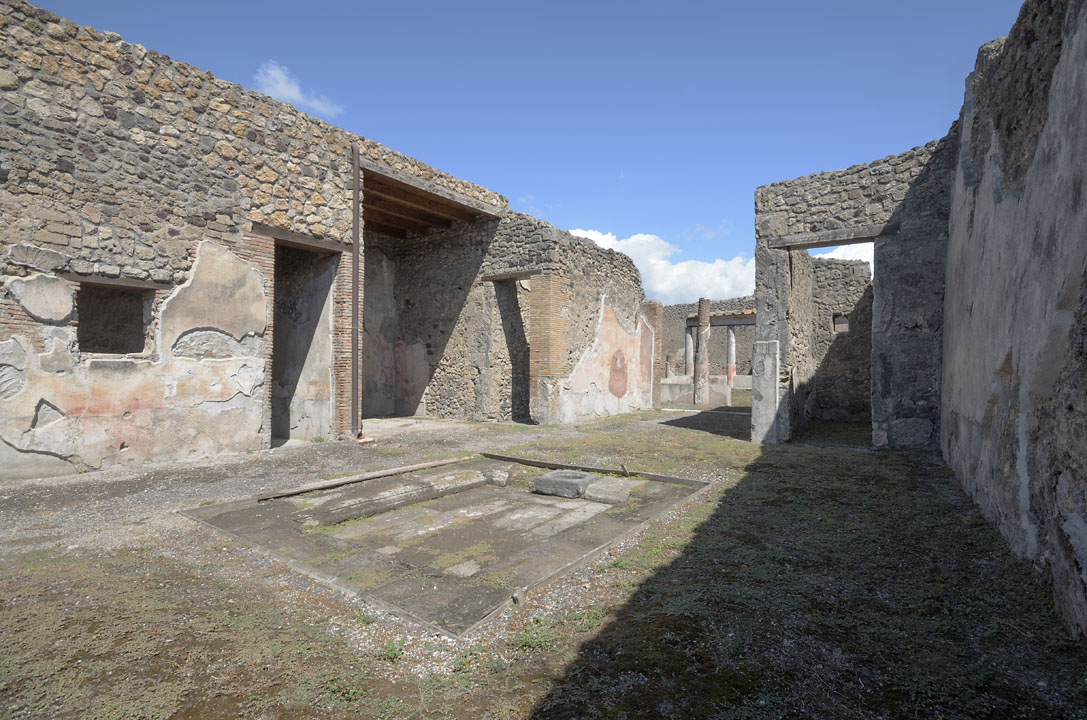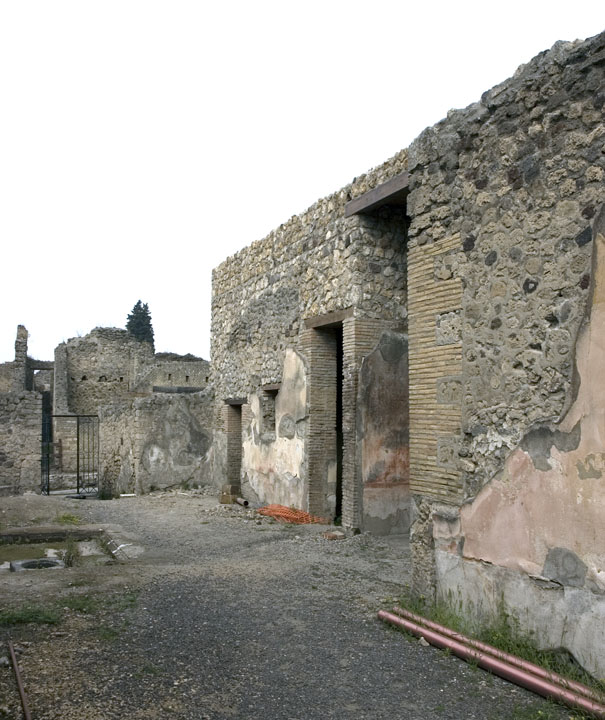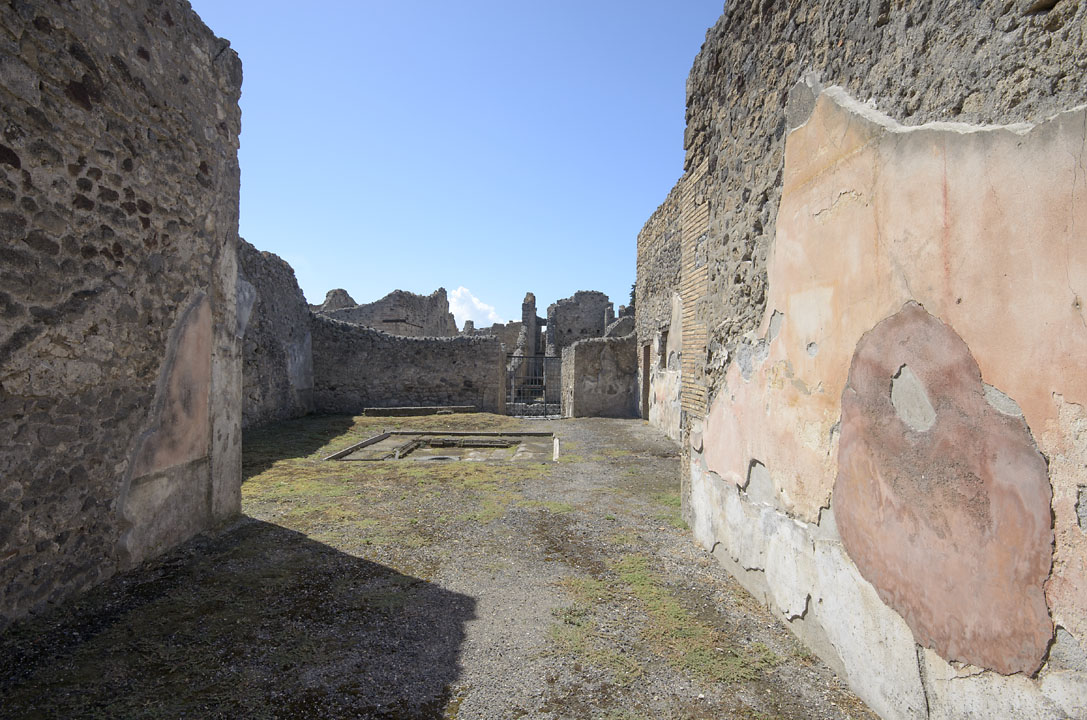Room b (atrium)
Description
Thomas Staub
The Tuscan atrium of this house shows a quite irregular shape with a lack of right angles in its corners. Also the impluvium, mainly made of tuffa stone blocks is placed in an erratic way not beeing paralell to any of the walls of the room.
Probably due to the narrow size of the plot, the atrium had rooms only on one of the long sides, the northern one, where as the southern one, the boundary wall towards the smaller workshop V 1,20.21 is totally closed. Three of the walls, the west, south and east, still show much of the original materials from the first building phase of the second half of the second century b.C. It consists of an opus incertum with frames of sarno stone and the filling rubble masonry consisting of mainly sarno stone but also lava, cruma and sometimes pieces of tuffa stone. In some areas the walls show repairs as well, either ancient or modern as for example the filled up holes after looters or, especially on the west wall, repairs after the bomb damages from world war II.
The north wall is mainly constructed in opus testaceum, its upper parts of a mixed opus incertum. But as indicated by the design of the probably original pavement from between 150 �" 100 b.C. (see below, the floor) also the north wall follows the original lay-out of the atrium.
The west wall has only one dooropening, the one owards the faucesa, the two flanking tabernae do not and, as shown by some sondages made, never did correspond with the atrium but formed separte entities.
On the north side three rooms opens up towrards the atrium. The westermost is room c, a small room, which in the final stage of the history of the house seems to have served more utilitarian purposes. The next, room d is slightly larger and has a window opening up towards the atrium next to the doorway. The last room in this row, room e, has the form of an ala, opening up towards the atrium in its entire width. A row of coloured stones which are inserted into the pavement marks the borderline between the two rooms.
In the east wall three dooropenings can be observed. The northernmost leads to the andronh, connecting the atrium with the peristyle in the eastern part of the house. The next opening is the entrance to tablinumg. It takes up the entire width of this room but in contrast to the situation at the ala the border is not marked by any kind of ornaments in the floor. The opening was nobilized by the use of stuccoed pilasters on both door-jambs. The last door leads to the smaller room f.
In the south wall, near its southeast corner a closed off window can be observed in 4.1 m of height. Since both rooms concerned by the former window, the atrium here and room f in V 1,21.22 functioned as light shafts for the adjacent areas, it must be asumed, that it stems at least from a period before V 1,21.22 became a independent entity with the lightshaft and served to enlighten an earlier room on the north side of a presumed larger V 1,23. This could indicate, that either an early, maybe the firts owner of the front part of what was to become the house of the greek epigrams granted his neighbour a samnite equivalent of servitus luminum or that this plot was still an empty space when V 1,23 was constructed. (cf. a similar situation in the west wall of peristyle i where another later blocked off window is situated in the boundary wall of the house.)
The floor, made of lavapesta, is only preservd in some smaller areas. It seems as if it was framed along the walls by a row of stones and pieces of bricks. The irregular placed impluvium is today on a somewhat lower level than the floor, maybe due to the collapsee of at least parts of the underneath. Since no traces of an earlier, lower floor could be found, it seems unrealistic, that the low level of the impluvium would be preserved from an earlier phase in the history of the house.
Along the northern rim of the impluvium a lead pipe leads aqueduct water into the house. A conduit from the northwestern corner of th impluvium probably led the exess water away and continued under the floor of the fauces towards the street.
The walls were decorated with paintings of the fourth style. Today only small remains are preserved of them, but thanks to the, even if only quite cursory, description by A.Mau in the BdI 1877. (p.19f.), the reproduction of one section by E. Presuhn (Presuhn taf. IV,2) and the small scale copy in the cork modell in the national museum of Naples one still caan get a quite good understanding of what they looked like. The soccle zone has a pinkish background with splash patterns in red and probably grey, forming a simple marble imitation. A black horizontal stripe seperates the soccle from the middle zone, which is composed of large red panels, separated from each other by vertical black fields, each decorated with a candelabrum. The red panels, each framed by inscribed ornamental stripes show medalions with busts of different deities (for a list of the depicted deities see the description by Mau under the header Decorations). The upper zone finally was made up by laying black framed white rectangles.
Länge N-Wand: 10.20 m
Länge S-Wand: 10.30 m
Länge W-Wand: 8.61 m
Länge O-Wand (zwischen der S-Wand und dem Streifen aus bunten Steinen, welcher die „Schwelle“ zwischen dem atrium und der ala bildet) 8.20 m.
Fläche:ca. 86.10 m2.

